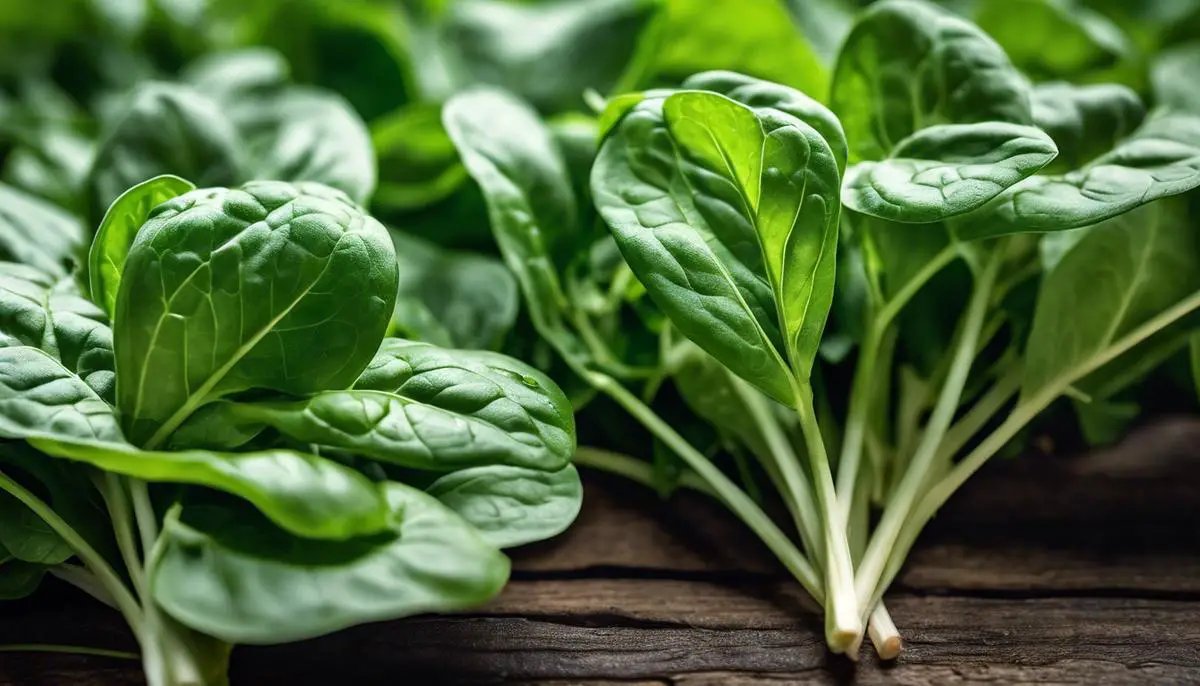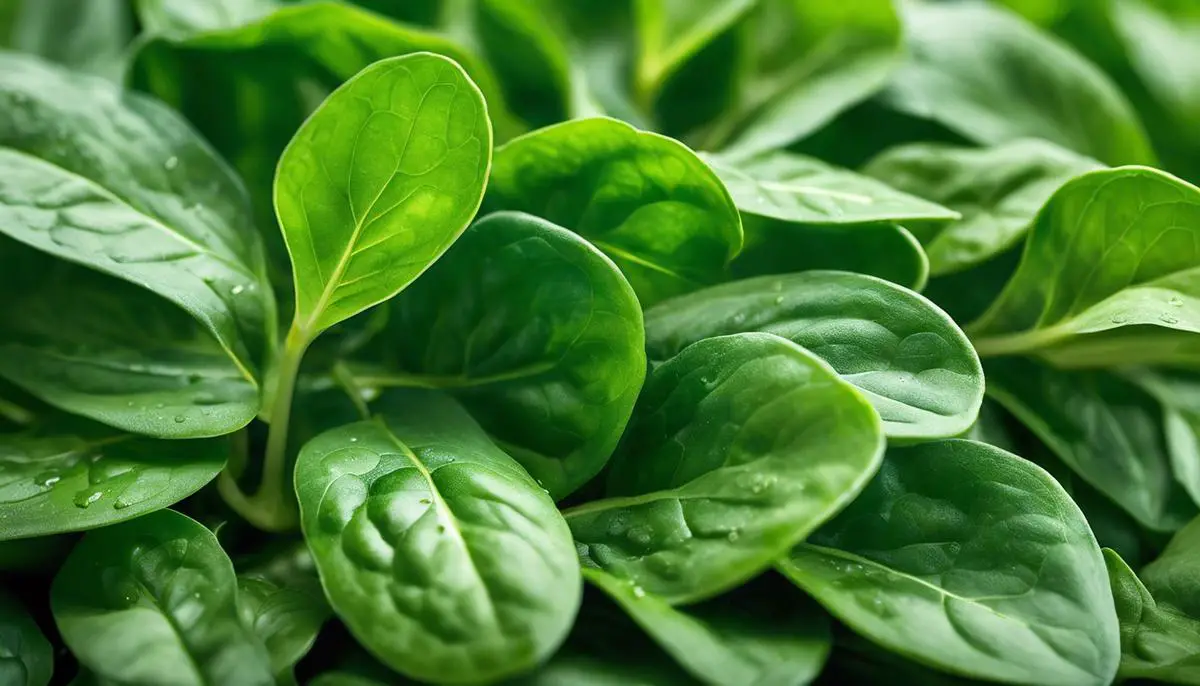Gardening enthusiasts and culinary aficionados alike often share a common appreciation for the delicate, yet vibrant, baby spinach leaves that add both nutrition and flavor to any dish. However, transforming a handful of seeds into a flourishing bed of greens requires knowledge and care that is rooted in the basics of horticulture. If you’re looking to cultivate your own garden of nutritious greens, understanding the nuances of Seed Selection and Planting, along with the intricacies of Soil Preparation and Fertilizing, can set you on a successful path. Moreover, mastering the art of Watering and Harvesting is crucial to ensuring that the fruits of your labor are enjoyed at their peak of freshness and taste. This exploration into the cultivation of baby spinach will provide you with the foundation needed for your gardening journey and will bring you closer to reaping the rewards of homegrown produce.
Seed Selection and Planting
Grow Your Greens with Ease: Top Baby Spinach Seeds for Your Home Garden
Hey there, fellow green thumbs and salad lovers! Looking to add a burst of nutrition and color to your family meals with homegrown baby spinach? Whether you’re an urban gardener or have sprawling backyard space, cultivating these leafy greens can be a delightful addition to your homemaking repertoire. Spinach is not only versatile in the kitchen, but it’s also packed with vitamins and minerals, ensuring your family gets that extra boost of goodness. Get ready to don those garden gloves because here are the best baby spinach seeds for successful growth.
Reader Poll: What online courses would interest you?
- ‘Bloomsdale’ Spinach – When it comes to reliability and flavor, ‘Bloomsdale’ is a longstanding favorite. These heirloom seeds produce a crop that’s heat-tolerant and packed with an abundance of crinkly, dark green leaves. It’s a forgiving option for beginners and offers a wonderful texture for salads and smoothies.
- ‘Catalina’ Spinach – For those seeking tender and smooth baby leaves, ‘Catalina’ spinach seeds are the way to go. A steadfast choice for continuous harvest, these seeds yield a crop that’s particularly suited for baby spinach due to its fast-growing nature. Plus, these leaves are perfect for those divine dinner salads or a healthy addition to a homemade pizza.
- ‘Red Kitten’ Spinach – Want to jazz up your dishes with some color? ‘Red Kitten’ spinach brings a splash of red to your greens. With its distinctive red veins and excellent resistance to bolting, it’s as much a visual delight in the garden as it is on the plate. Its quick growth cycle makes it ideal for those who don’t like to wait long for their produce.
- ‘Space’ Spinach – Limited on room? No problem! ‘Space’ spinach is an excellent choice for container gardens, boasting impressive yield and resistance to downy mildew. The smooth, dark green leaves are highly versatile and can be harvested early for salads or left to grow for steaming and sautéing.
- ‘Tyee’ Spinach – If you’re up against cooler climates, ‘Tyee’ spinach seeds are a match made in gardening heaven. This semi-savoy variety has leaves that are slightly crinkled and incredibly flavorful, making it a fantastic choice for both baby leaf and full leaf harvests.
Remember, baby spinach thrives in cooler temperatures, so aim to plant your seeds in early spring or fall for the best results. Well-drained soil rich in organic matter will give your baby spinach the ideal home to flourish. Water consistently to keep the soil moist but not waterlogged, and ensure your spinach gets a good dose of morning sun followed by partial shade as the day heats up.
Embrace the joy of garden-to-table living with these top-notch baby spinach seeds. Not only will you nurture your green thumb, but you’ll also be bringing fresh, nutrient-rich foods to your family’s table. Happy planting and here’s to a bountiful harvest!

Soil Preparation and Fertilizing
Rolling up sleeves and getting into the heart of gardening to give those little baby spinach leaves the nutrient-rich environment they crave can be both rewarding and a pinch of fun! Preparing and enriching the soil isn’t just about giving plants a place to set down roots; it’s about setting the stage for a spectacular performance of growth and vitality.
Subscribe to our newsletter!
To start, test the soil pH as baby spinach thrives in a neutral to slightly alkaline environment, with an ideal pH range of 6.5 to 7.5. Simple testing kits can be found at local garden centers, and they can quickly tell if the soil is in the sweet spot or if it needs a little adjustment. If the soil is too acidic, adding garden lime can help balance it out.
Next, consider the soil texture and structure. Baby spinach does best in loamy soil that holds moisture well without becoming waterlogged. For soils that are heavy with clay, incorporating organic materials like compost, aged manure, or peat moss can boost fertility and improve drainage. Sandier soils also benefit from organic amendments, which help with water retention and provide essential nutrients.
Organic matter is the main event when it comes to enriching the soil. It holds onto nutrients that baby spinach plants need and releases them over time. It also encourages beneficial microbial activity, making sure the soil is healthy and full of life. Well-composted organic material, free from seeds and pathogens, should be generously worked into the top 6-8 inches of soil.
Adding a balanced, slow-release organic fertilizer can give baby spinach a head start. Look for options that provide an even distribution of nitrogen, phosphorus, and potassium. These are the building blocks for strong growth, resilient plants, and those tender, tasty leaves that are so loved.
Mulching is the unsung hero in the garden. It helps to maintain moisture and temperature levels in the soil while keeping those pesky weeds at bay. Applying a few inches of organic mulch, such as straw or shredded leaves, around the baby spinach can save a lot of time and effort that might otherwise go into watering and weeding.
Finally, regular check-ins with the soil throughout the growing season ensure that the soil remains a hospitable place for baby spinach. Monitoring moisture levels, adding additional organic matter as needed, and being vigilant about weeding will help baby spinach thrive.
By giving careful attention to soil preparation and enrichment, the tiny seeds of baby spinach are sure to grow into lush, leafy greens, ready to be picked and enjoyed. From sowing to harvesting, each step is a contribution to a lifestyle that cherishes the freshness and flavor of home-grown produce, savoring the satisfaction of a meal garnished with love and care from the family garden.

Watering and Harvesting
Ah, the joys of a bountiful harvest! Fellow green thumbs and aspiring gardeners, if you’ve been following along, we’ve nursed our baby spinach from seed to sprout. Now, the real excitement begins. Understanding the ins and outs of watering schedules and harvest times is essential to reaping the best yields from our lovingly tended plants.
Timing is everything when it comes to watering baby spinach. As tender leafy greens, spinach plants prefer consistent moisture but despise soggy feet. An ideal practice is to provide water early in the morning; this allows the leaves to dry quickly as the sun climbs, minimizing the risk of disease. In the heat of summer, consider a second watering in the evening to prevent the soil from drying out completely. However, avoid night watering as it can leave the plants vulnerable to fungal diseases.
When it’s about quantity, the trick lies in the light touch. Aim for about an inch of water per week, either from rainfall or supplemental watering. A rain gauge can be a handy tool for monitoring Mother Nature’s contribution to this quota. Ensure you’re watering at the base of the plants to keep the foliage dry, thereby reducing the risk of leaf spot diseases that can spoil the lush green leaves.
As for the harvest, timing is key! Baby spinach is ready to pick about 3-6 weeks after planting, depending on the conditions and the variety. To harvest, wait for a dry day when the morning dew has evaporated. This helps keep the leaves crisp and less prone to wilting. Look for tender, bright green leaves about 3-4 inches long. Snipping the outer leaves first encourages continuous growth and allows for a prolonged harvest period. Don’t shy away from regular trimming, as this encourages the plants to produce new, tender leaves.
And remember, if the baby spinach begins to bolt (shoot up a flower stalk), it’s time to gather your bounty with a little more urgency. Bolting changes the flavor, making the leaves bitter, and is a sign that the plant is wrapping up its life cycle.
There you have it, the garden wisdom needed to water and harvest baby spinach for salads that will make your family’s taste buds dance with joy. Stay rooted in these practices, and the garden will keep giving. Happy gardening and even happier eating!

Mastering the techniques of growing baby spinach is akin to conducting a symphony of nature’s elements, where each note must be played with timing and precision. By providing your plants with a well-prepared soil bed rich in organic matter, the precise amount of water to sustain growth without causing distress, and the knowledge to harvest at the optimal moment, you’ll achieve a crop that is both bountiful and delicious. As the leaves of your spinach begin to unfurl and mature, remember that the endeavor of your garden is not only measured in the produce harvested but also in the deeper understanding and connection to the food that graces your table. Embrace the journey of gardening, for it is as nourishing to the soul as it is to the body.

